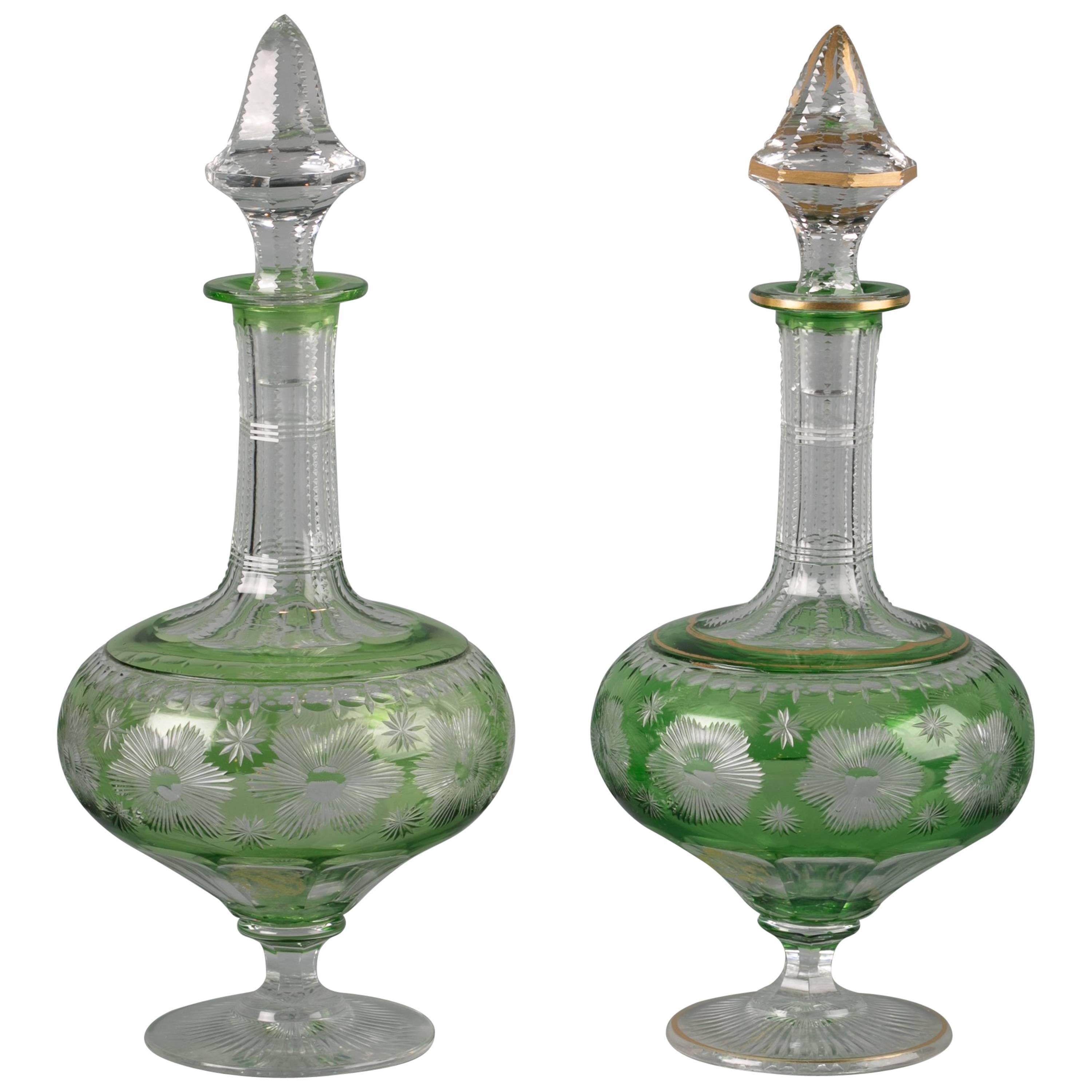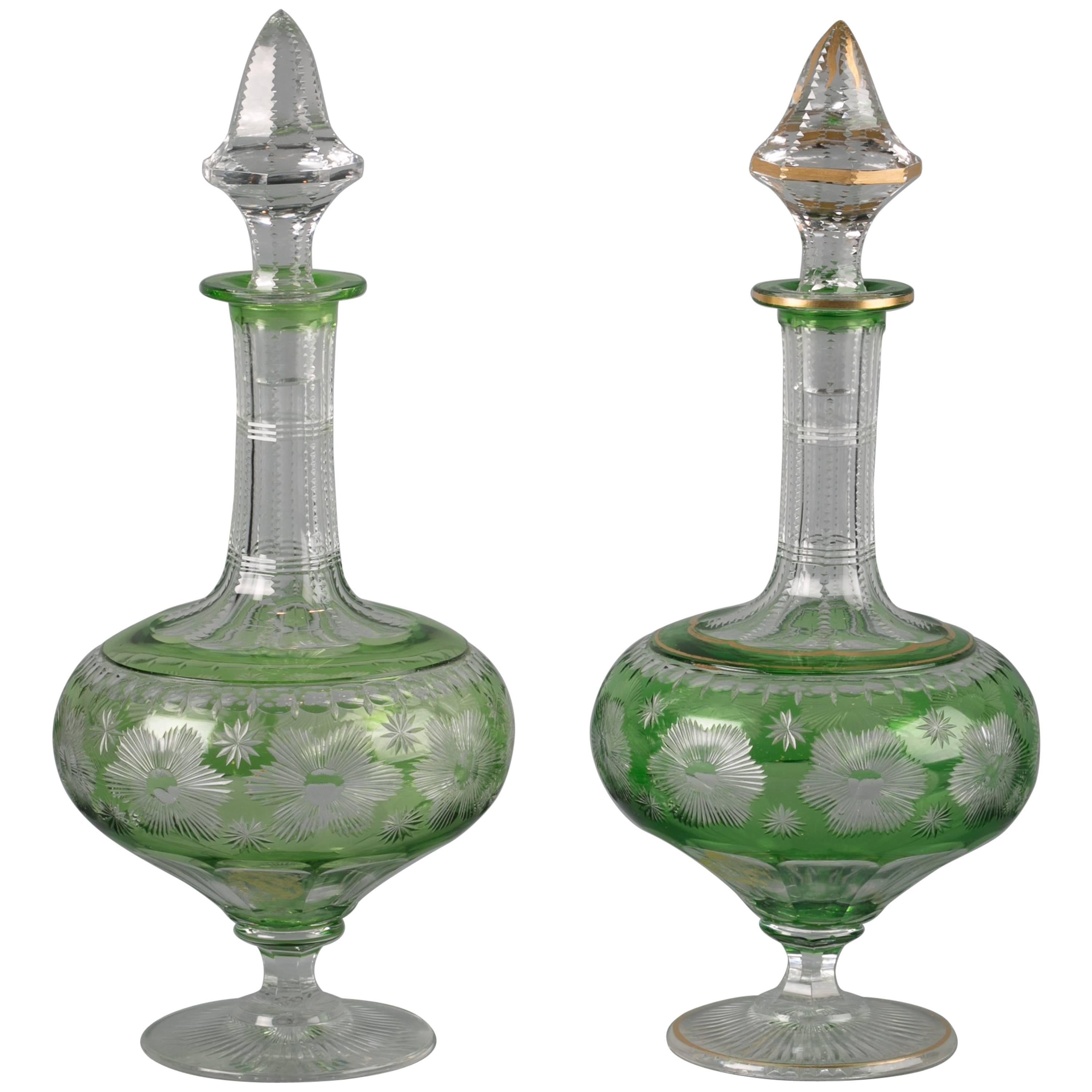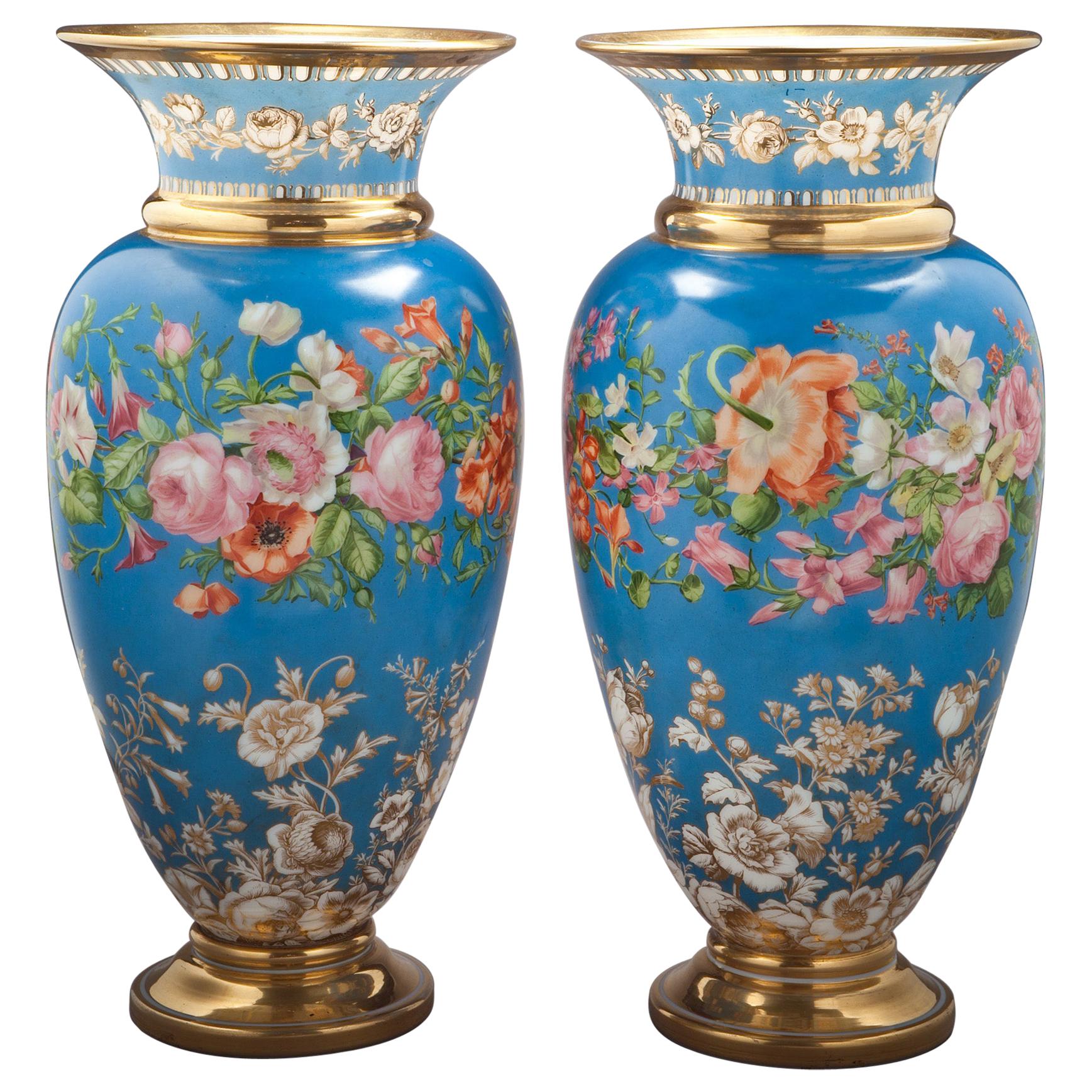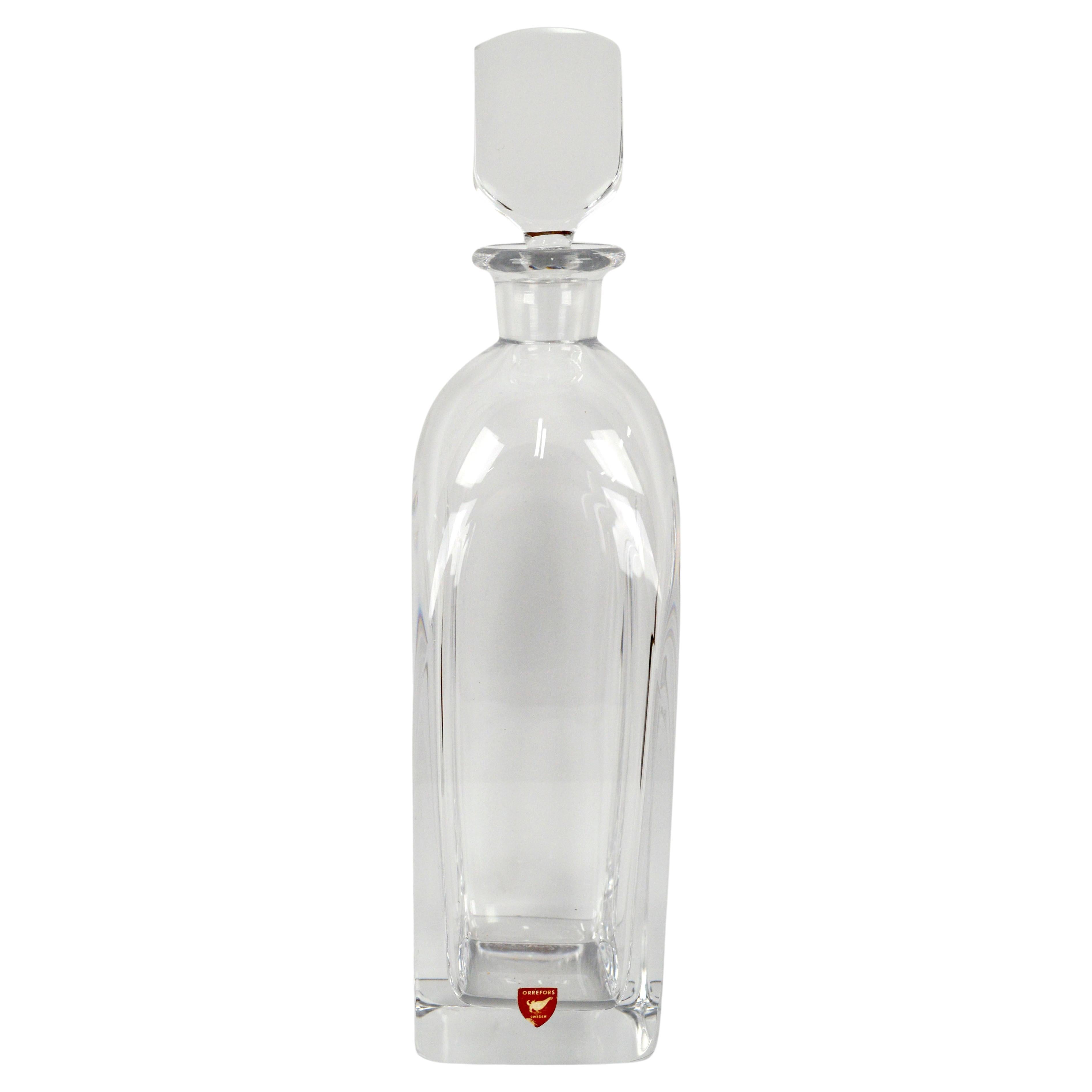Items Similar to Set of Four French White Opaque Decanters and Stoppers, circa 1830
Want more images or videos?
Request additional images or videos from the seller
1 of 5
Set of Four French White Opaque Decanters and Stoppers, circa 1830
About the Item
Painted with swags of flowers.
- Dimensions:Height: 9 in (22.86 cm)Diameter: 3.25 in (8.26 cm)
- Materials and Techniques:
- Place of Origin:
- Period:
- Date of Manufacture:circa 1830
- Condition:Condition: minor loss of gilding.
- Seller Location:New York, NY
- Reference Number:
About the Seller
5.0
Recognized Seller
These prestigious sellers are industry leaders and represent the highest echelon for item quality and design.
Established in 1940
1stDibs seller since 2015
157 sales on 1stDibs
Typical response time: 21 hours
- ShippingRetrieving quote...Ships From: New York, NY
- Return PolicyThis item cannot be returned.
More From This SellerView All
- Pair of French Green-Flashed and Engraved Bottles and Stoppers, circa 1890Located in New York, NYOne with gilt decoration the other apparently never gilded.Category
Antique Late 19th Century French Bottles
MaterialsGlass
- Pair of French Green-Flashed and Engraved Bottles and Stoppers, circa 1890Located in New York, NYOne with gilt decoration the other apparently never gilded.Category
Antique 1890s French Bottles
MaterialsCut Glass
- Pair of Large French Opaline Vases, circa 1830Located in New York, NYPair of large French opaline vases, circa 1830.Category
Antique 1830s French Vases
MaterialsOpaline Glass
- Pair of Paris Porcelain Vases, circa 1830Located in New York, NYDelicately painted on a striking purple ground on an integrally marbleized porcelain base.Category
Antique 1830s French Vases
MaterialsPorcelain
- Pair of English Mason's Ironstone Covered Vases, Circa 1830Located in New York, NYDecorated in various tones of blue on a gray ground with stylized birds and flowers with gilt highlights, with dolphin handles and twin dolphin finials.Category
Antique 1830s English Vases
MaterialsPorcelain
- Pair of English Ceramic Pale Lilac Ground Spill Vases, circa 1830Located in New York, NYWith vine and grapes molded in high relief.Category
Antique 1830s Vases
MaterialsCeramic
You May Also Like
- Raymor Yellow Art Glass Vessel, Decanter & White Round Stopper Midcentury, ItalyBy RaymorLocated in Miami, FLMid-Century Modern Decanter or Vessel made out of blown glass in bright yellow and white stopper by Raymor, Italy. Marked and dated underneath. A gorgeous vessel for your holiday t...Category
Late 20th Century Italian Mid-Century Modern Jars
MaterialsBlown Glass
- Exceptional Pair of Opaque Glass Ormolu Mounted Decanters by LeucharsBy William LeucharsLocated in Steyning, West sussexA highly unusual pair of Victorian decanters made by Leuchars of 38 Piccadilly London. The opaque glass bodies ormolu-mounted with Fine swaged rope decoration this with inserted enam...Category
Antique 1880s English Victorian Bottles
MaterialsEnamel, Ormolu
- Vintage Mid-Century Orrefors Crystal Decanter with StopperBy OrreforsLocated in Soquel, CAElegant Mid-Century Modern vintage crystal decanter with stopper by Orrefors (Swedish, founded 1898), c. 1960's. Engraved signature to base Orrefors HM 2498 - this particular style was by Edvard Hall. Includes original red Orrefors Sweden sticker with logo. "Orrefors HM 2498" etched into base. Measures 11.5" H x 3" W x 3" D. Orrefors Glassworks was founded in 1898 on the same site where ironworks operations had been run since 1726. In the same year that the glassworks was founded, a hot shop was built for making technical, medical and household glass and stemware to make use of waste wood and labour. Glass now replaced the less profitable ironworks operations. In 1913, Consul Johan Ekman from Gothenburg became the new owner of Orrefors Glassworks. He appointed Albert Ahlin as manager of the glassworks and this marked the start of a new era. In 1914, Orrefors started manufacturing crystal products, and as well as cut crystal according to purchased patterns and samples, Orrefors made art glass using the overlay technique with etched decoration. The new management quickly saw that artists were needed in the business, so Simon Gate was employed in 1916 and was joined by Edward Hald a year later. That same year, Gate and Hald made their first tentative attempts at figure engraving. They also experimented with the new innovative graal (grail) glass technique that was developed at Orrefors by the master glassblower Knut Bergqvist. The major successes were achieved a few years later at the Gothenburg Exhibition in 1923, and in particular at the Paris Exhibition in 1925. The thin engraved glass was admired by the surrounding world, and both Orrefors and the artists themselves were awarded the Grand Prix. The successes of Simon Gate and Edward Hald in Paris in 1925 constituted the start of the long Orrefors tradition of creative design closely combined with genuine and innovative craftsmanship. Since then, new designers and skilled glassmakers have continued in the spirit of Gate and Hald. Vicke Lindstrand and Edvin Öhrström with the new glass technique called Ariel in the 1930s. Sven Palmqvist with Kraka and Ravenna in the 1940s. And in the 1950s with Fuga, which, along with Nils Landberg’s slender tulip-shaped glass “Tulpan” and Ingeborg Lundin’s apple-shaped vase “Äpplet”, are now seen as symbols of the renaissance of Swedish design. The 1960s are associated with Gunnar Cyrén’s Pop glass, and in the 1970s, Eva Englund, Olle Alberius, Lars Hellsten and Jan Johansson as well as Cyrén worked at the glassworks. Since the 1980s, designers such as Anne Nilsson, Erika Lagerbielke, Helen Krantz, Matz Borgström, Per B Sundberg, Martti Rytkönen, Lena Bergström, Ingegerd Råman, Malin Lindahl and Efva Attling...Category
Mid-20th Century Swedish Mid-Century Modern Bottles
MaterialsCrystal
- Pair of Brilliant Heavily Cut Glass Sculptural Decanters with StoppersLocated in Port Jervis, NYFabulous matched pair of early 20th century cut glass decanters. In excellent antique condition with no damage at all. Squat bottle form ...Category
Vintage 1930s English Edwardian Glass
MaterialsGlass
- 1950’s Spaghetti Large Amethyst Glass Decanter With StopperBy (after) Jackson PollockLocated in Charleston, SCA fantastic mid-century modern amethyst decanter with a Pollock style spaghetti design. Made in Spain.Category
Mid-20th Century Spanish Mid-Century Modern Bottles
MaterialsArt Glass
- Pair of Antique Amber Glass Liquor Decanters with Mother of Pearl StoppersLocated in Hamilton, OntarioThis pair of antique amber blown glass bottle flasks, or decanters were made in circa 1870 in the period Victorian style and originate from England. These decanters are hand formed, ...Category
Antique Late 19th Century English Late Victorian Barware
MaterialsMother-of-Pearl, Blown Glass
Recently Viewed
View AllMore Ways To Browse
Bottle Stopper
Antique Stopper
Decanter Stoppers
Set Of Glass Bottles
Flower Bottle
White Vessel Sets
Antique French Glass Bottles
White Glass Bottle
Set Of Decanters
Decorative Bottle Stopper
Vessels With Stoppers
French Decanter
Antique Bottle Stoppers
Antique Bottle Stopper
Glass Vase Stopper
Set Vases Four
Antique Bottles With Stoppers
Antique Bottle With Stopper





